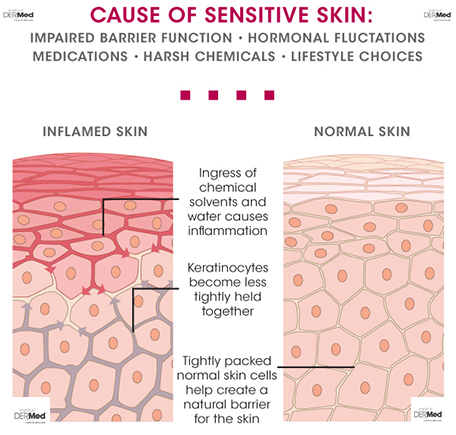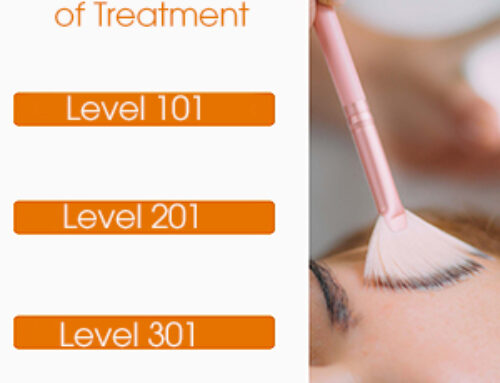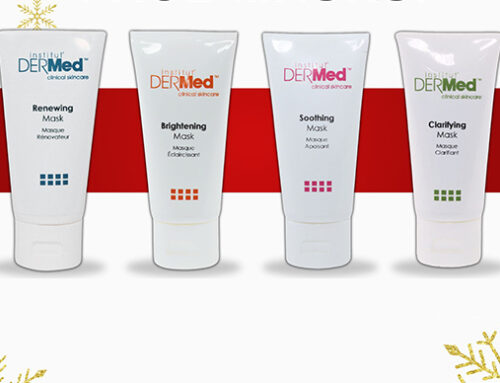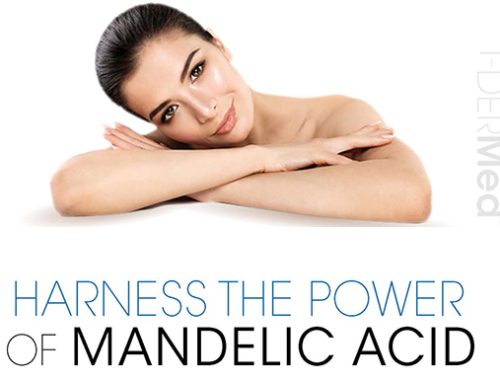 What is Rosacea?
What is Rosacea?
Rosacea is a sensitive skin disorder that causes redness and blotchiness to the skin. The cause of Rosacea is not known but it usually affects people with fair skin of Celtic origin. Research has found that demodex folliculorum a mite that exists in our skin and usually asymptomatic, may be a trigger for skin conditions.
The skin of people with Rosacea contains approximately 4 times as many of these tiny skin mites than people without Rosacea.
Rosacea Classification System
Rosacea begins as small red spots on the nose, chin and cheeks. These spots gradually merge leaving behind a red blotch. Over time if left untreated numerous blotches combine, eventually leading to a noticeable redness in the center of the face.
The severity of Rosacea outbreaks can fluctuate and last for many years. Typical symptoms of rosacea are flushing easily, especially going from a cold to a warm atmosphere. Facial redness is common, sometimes accompanied by the appearance of tiny broken blood vessels called telangiectasias, and sometimes accompanied by acne outbreaks. Though Acne-Rosacea resembles teenage acne the two conditions are unrelated.
An unfortunate complication of Rosacea is Rhinophyma. Although this occurs rarely, Rhinophyma is a very emotionally distressing condition because it creates an overgrowth of the oil glands of the nose giving the nose a noticeable thick, enlarged appearance.
The standard grading system for rosacea classifies it in levels of severity:
Level 1
Manifests as flushing and redness that comes and goes on the cheeks, nose, forehead, or chin. There may be some telangiectasia (spider veins) on the face.
Level 2
Is classified as inflammatory Rosacea. At this level there is long lasting redness in the skin, and red bumps and pustules appear that are not caused by the production of excess oil. The fine red blood vessel lines are in greater quantity and more noticeable.
Level 3
Is known as Phymatous Rosacea. At this level the skin exhibits a deep shade of redness and the blood vessels look like a road map across the cheeks and nose. Skin bumps are noticeable and painful and there is a thickening of the skin.
Treating Rosacea
Although Rosacea is not classified as an infection of the skin Rosacea spots do respond well to antibiotic treatment, perhaps because many antibiotics also contain anti inflammatory ingredients. Skin care treatments can also help to make a visible difference in the appearance of the skin. People with Rosacea (and those with environmentally caused sensitive skin conditions) are extremely sensitive to chemical irritants, so it is advised to avoid soap, astringents, and abrasives. It is also recommended to avoid products that are formulated with parabens, sodium lauryl sulfates, phthalates, artificial dyes or synthetic fragrances.
Skin Conditioning
Skin care cleansers containing soothing ingredients such as Licorice Root Extract and Grape Seed Extract with anti-oxidants properties are beneficial for sensitive skin conditions. Balance and calm your skin after cleansing with a toner containing Willow Bark extract, which has redness diffusing properties and is a natural alternative to hydrocortisone. A serum with active ingredients Totarol and Licorice Root Extract used nightly can soothe the redness that is particularly associated with acne-rosacea. Totarol comes from the Totara Tree in New Zealand and is a very gentle alternative to Benzoyl Peroxide for creating a comfortable complexion.
A good moisturizer with a strong moisture barrier is a must for helping to keep out environmental aggravations and prevent the appearance of sensitive skin triggers. A moisturizer with an SPF and active ingredients titanium dioxide and/or zinc oxide, along with Sodium PCA – a high performance humectant for moisture. are your best choice.
Laser Treatments
For those people dealing with telangiectasias, (those spider web veins on the face), IPL Laser is very effective to treat these broken blood vessels. IPL is Intense Pulsed Light and a great choice for rosacea clients. Gratifying results are best achieved with a series of treatments, typically spaced about a month apart.
Other non-Roscea causes of Sensitive Skin conditions include:
• An impaired skin barrier function that can cause moisture loss, irritation, redness and hypersensitivity.
• Psoriasis which is a a genetic skin disorder triggered by environmental factors.
• Environmental changes in the weather inside and out that create skin dehydrating conditions.
• Pollution like exhaust fumes; smoke and dust.
• Hard water which contains high levels of minerals that creata a pH imbalance in the skin.
• Lifestyle choices (diet, exercise and stress) effect skin health.
• Fluctuating hormonal activity during menses, teen years and pregnancy.
• Foods we eat can be triggers for inflammatory responses.
• Washing detergent.
• Jewelry that contains nickel.
• Chemical household cleaners.
Conclusion
In developing a good skincare regimen designed to condition your skin while also soothing and creating a comfortable complexion understanding your skin condition and how ingredients work is important.
Look for these beneficial cosmetic ingredients for your homecare regimen:
Licorice Root Extract -Derived from liquiritia root, a member of the legume family, Soothes and evens the appearance of the skin.
Bisabolol – Redness relieving.
Chamomile – Essential oil of chamomile targets bacteria, diminishes the appearance of redness and helps to maintain hydration.
Clove Oil -Highly antioxidant. Derived from the clove tree, it is a part of the Melaleuca, eucalyptus family of plants native to tropical Asia.
Papaya Fruit Enzyme – Softens and is a gentle exfoliator.
Comfrey -A restorative ingredient that promotes healthy skin.
Pumpkin Seed Oil – A nourishing ingredient that helps to prevent moisture loss.
Green Tea Leaf Extract -An antioxidant that soothes redness.
Rosemary Leaf Extract – Promotes calm skin.
Grape Seed -Protects against environmental stressors.
Totarol – Targets bacteria and relieves redness; Derived from the Totara Tree in New Zealand, and used as a gentle alternative to Benzoyl Peroxide.
Neutrazen™ (Palmitoyl Tripeptide 8) – Soothing, helps to restore a normal complexion.
Willow Bark – Skin conditioning and a natural alternative to hydrocortisone.
Lactic Acid – Exfoliates and increases hydration.
Pancreatin Enzymes -Removes dead skin cells; Decongests clogged pores; Softens and protects against free radicals.
Alfalfa – Purifies, soothes and helps to diffuse redness.
Shea Butter – Helps to maintain moisture in the skin.



